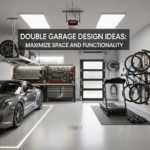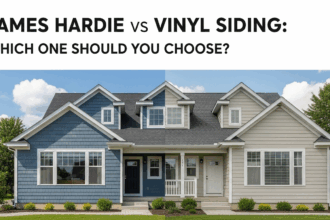Why Your Home Office Design Matters
Home Office Design Types – Before diving into specific styles, it’s crucial to understand why thoughtful design is so important. Your workspace environment has a direct and measurable impact on your performance and well-being. A cluttered, uncomfortable, or uninspiring office can lead to distraction and decreased motivation.
A well-designed home office, on the other hand, can enhance focus and streamline your workflow. It creates a psychological boundary between your personal life and professional duties, which is essential for maintaining a healthy work-life balance. Furthermore, in the age of video conferencing, your office backdrop has become a part of your professional image. Choosing the right design is an investment in your productivity and career.

Exploring Popular Home Office Design Types
The world of interior design offers a rich palette of styles that can be adapted for a home workspace. Each one comes with its own philosophy, aesthetic, and functional advantages. Exploring these mainstream home office design types is the first step toward creating a space you’ll love to work in.
The Minimalist Home Office: Less is More
Minimalism is built on the principle of “less is more.” This design style focuses on simplicity, functionality, and the elimination of all non-essential elements. The goal is to create a serene and decluttered surface that promotes clarity and focus.
A minimalist office typically features a neutral color palette—think whites, grays, and soft beiges. Furniture is chosen for its simple form and function, often featuring clean lines and a lack of ornamentation. Storage is a key component, but it’s usually hidden away in sleek, handleless cabinets to maintain an uncluttered visual field. This style is perfect for individuals who are easily distracted and thrive in a calm, orderly environment.
The Modern and Sleek Workspace
Often confused with minimalism, modern design is a distinct style that emerged in the mid-20th century. While it also values clean lines and simple forms, it incorporates a broader range of materials like metal, glass, and plastic. It’s less about stark emptiness and more about sophisticated, intentional design.
A modern home office feels curated and professional. You might find a glass-top desk, a chrome-legged chair, and abstract art on the walls. Technology is often a centerpiece, with high-tech integration like smart lighting and wireless charging pads seamlessly built into the workspace. This design is ideal for tech professionals, executives, and anyone who wants their office to project an image of forward-thinking efficiency.
The Cozy and Rustic Retreat
If the thought of a sleek, modern office leaves you cold, a rustic design might be the perfect antidote. This style is all about warmth, comfort, and an connection to the natural world. It creates an inviting and grounding atmosphere that can feel like a cozy cabin retreat.
Natural materials are the hallmark of rustic design. Think solid wood desks with a visible grain, a comfortable upholstered chair, and soft, warm textures from a wool rug or a throw blanket. Lighting is typically warm and layered, relying on lamps rather than harsh overhead lights. This type of office is wonderful for writers, therapists, and anyone whose work benefits from a calm, contemplative, and comfortable environment.
Niche and Specialized Home Office Design Types

Beyond the mainstream styles, there are more specialized aesthetics that cater to specific tastes and needs. These niche home office design types allow for greater personal expression and can solve unique spatial or wellness challenges. Delving into these options can help you craft a truly one-of-a-kind workspace.
The Industrial and Urban Loft
Inspired by old factories and urban lofts, industrial design celebrates raw, unfinished elements. It’s a style that finds beauty in function and utility, creating a look that is both edgy and sophisticated. This design is characterized by its use of exposed materials.
Think exposed brick walls, visible ductwork, concrete floors, and furniture made from a combination of weathered wood and dark metal. A classic industrial desk might feature a reclaimed wood top on a steel frame. Lighting often comes from vintage-style Edison bulbs or metal pendant lights. This aesthetic is perfect for creatives, architects, and entrepreneurs who appreciate a raw, functional, and spacious feel.
The Biophilic Design: Bringing Nature Indoors
Biophilic design is a more recent but rapidly growing trend based on the idea that humans have an innate need to connect with nature. This design philosophy intentionally incorporates natural elements into the built environment to improve health, well-being, and productivity.
This is more than just adding a few plants. It involves a holistic approach to creating a natural-feeling workspace. It emphasizes natural light, views of the outdoors, and the use of natural materials and patterns. The goal is to create a restorative sanctuary that reduces stress and enhances cognitive function.
Key Elements of Biophilic Design
- Abundant Natural Light: Positioning your desk to maximize sunlight exposure.
- Live Plants and Greenery: Incorporating a variety of indoor plants, from small desk succulents to large potted ferns, or even a living wall.
- Natural Materials: Using furniture and decor made from wood, stone, bamboo, and other organic materials.
- Views of Nature: Arranging the office to provide a clear view of a garden, trees, or the sky.
Benefits for Productivity and Well-being
Studies have shown that biophilic environments can significantly reduce stress, improve concentration, and boost creativity. The presence of plants can also help purify the air, creating a healthier physical space. This a fantastic choice among the various home office design types for anyone, but especially those in high-stress jobs or creative fields.
How to Choose the Right Home Office Design Type for You
With so many options, selecting the perfect style can feel overwhelming. The best approach is to take a systematic look at your personal needs, preferences, and constraints.
- Assess Your Work Needs: What does your typical workday look like? Do you need space for multiple monitors? Extensive file storage? A large surface for drawing or reviewing blueprints? Functionality should always be your primary consideration. A writer may prioritize comfort and inspiration (Rustic), while a programmer may need a setup for deep focus (Minimalist or Modern).
- Consider Your Personal Style: Your home office should feel like an extension of you. Look at the rest of your home. Are you drawn to clean, modern lines or warm, eclectic spaces? Your office should harmonize with your overall home aesthetic while still being a distinct zone for work.
- Evaluate Your Space and Light: The size, shape, and natural light of your available space will influence your design choices. A small, dark corner will benefit from the light and airy feel of a minimalist design, while a large room with high ceilings could handle the bold elements of an industrial style.
- Set a Realistic Budget: The cost of furnishing an office can vary dramatically between styles. A minimalist setup focused on essentials may be more budget-friendly than a modern office filled with designer furniture and high-end tech. Be honest about your budget from the start to narrow down your options.
Final Thoughts: Designing Your Productive Sanctuary
Your home office is your personal productivity hub. Choosing from the diverse range of home office design types is not just an aesthetic decision; it’s a strategic choice that impacts your daily mood, focus, and success. Whether you are drawn to the clean simplicity of minimalism, the cozy warmth of a rustic design, or the stress-reducing power of biophilia, there is a perfect style waiting for you.
By carefully considering your workflow, personal taste, and the practical realities of your space, you can move beyond a makeshift workspace to create a truly intentional and inspiring environment. An office that is thoughtfully designed is one where you can do your best work, day after day. Take the time to explore, plan, and build the productive sanctuary you deserve.






